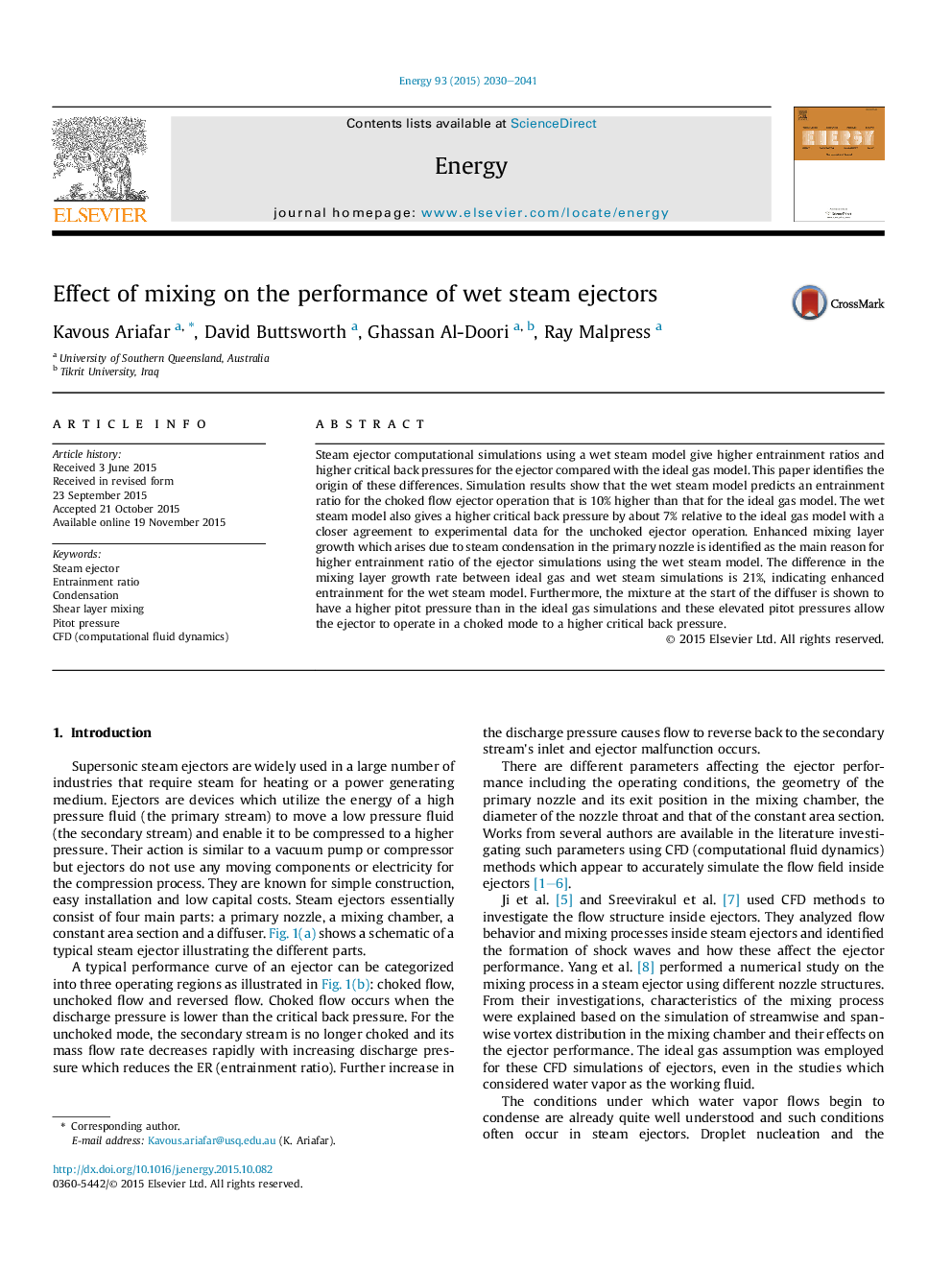| Article ID | Journal | Published Year | Pages | File Type |
|---|---|---|---|---|
| 1731641 | Energy | 2015 | 12 Pages |
•Ejector simulations with the wet steam model give a higher ER than the ideal gas model.•Higher critical back pressures are also obtained from wet steam simulations.•Enhanced mixing contributes to the higher ER for the wet steam simulations.•Higher critical back pressures arise from higher pitot pressure for the wet steam simulations.
Steam ejector computational simulations using a wet steam model give higher entrainment ratios and higher critical back pressures for the ejector compared with the ideal gas model. This paper identifies the origin of these differences. Simulation results show that the wet steam model predicts an entrainment ratio for the choked flow ejector operation that is 10% higher than that for the ideal gas model. The wet steam model also gives a higher critical back pressure by about 7% relative to the ideal gas model with a closer agreement to experimental data for the unchoked ejector operation. Enhanced mixing layer growth which arises due to steam condensation in the primary nozzle is identified as the main reason for higher entrainment ratio of the ejector simulations using the wet steam model. The difference in the mixing layer growth rate between ideal gas and wet steam simulations is 21%, indicating enhanced entrainment for the wet steam model. Furthermore, the mixture at the start of the diffuser is shown to have a higher pitot pressure than in the ideal gas simulations and these elevated pitot pressures allow the ejector to operate in a choked mode to a higher critical back pressure.
